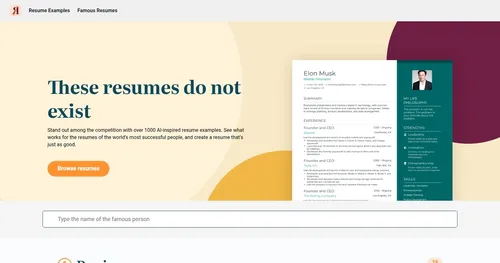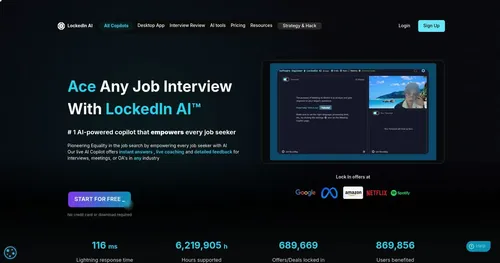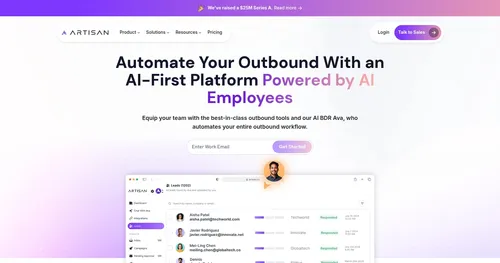Tanka
Tanka is an AI-powered team messenger designed to enhance collaboration through long-term memory and context-aware features. It integrates with tools like Slack, Gmail, WhatsApp, and Notion to centralize communication and preserve institutional knowledge. Built on the proprietary OMNE framework and MemGraph technology, it offers advanced memory capabilities, enabling teams to retrieve past conversations, decisions, and insights instantly. Launched in February 2025, Tanka addresses “organizational amnesia” by storing and structuring data from chats, emails, and documents.
The Smart Reply feature generates context-aware responses for messages and emails, drawing from past interactions and integrated apps. It analyzes tone and style to mimic user preferences, reducing drafting time. The “Turn Chat into Action” functionality converts conversations into documents like pitch decks or roadmaps, streamlining workflows. The search tool allows users to find information across platforms with contextual insights, not just keywords. Tanka also automates onboarding by generating up-to-date docs for new hires based on team knowledge. Since its alpha launch, it’s generated over 35,000 smart replies, saving significant time for users.
Compared to Slack, which prioritizes real-time chat, or Microsoft Teams, with strong video integration, Tanka stands out for its memory-driven AI. Notion excels in documentation but lacks Tanka’s conversational intelligence. Pricing is flexible but starts higher than basic plans from competitors, which may deter small teams. The mobile app lacks a dark mode, and initial setup requires effort to integrate apps and upload data.
Users praise Tanka for boosting productivity, especially in multilingual teams or those handling repetitive queries. The ability to preserve context across platforms is a key strength. However, some find the interface less intuitive than competitors, and the learning curve can be steep for non-technical users. The tool’s reliance on data input means its effectiveness grows with use, which may frustrate those seeking instant results.
To get started, connect your primary communication tools and upload key documents. Experiment with Smart Reply on low-stakes messages to fine-tune its tone. Regularly update your knowledge base to maximize the AI’s potential.
Video Overview ▶️
What are the key features? ⭐
- Smart Reply: Generates context-aware responses mimicking user tone.
- MemGraph: Stores and retrieves knowledge hierarchically for insights.
- Turn Chat into Action: Converts conversations into documents like roadmaps.
- Instant Search: Finds information across platforms with contextual results.
- Onboarding Automation: Creates up-to-date docs for new hires automatically.
Who is it for? 🤔
Examples of what you can use it for 💭
- Startup Founder: Converts team chats into pitch decks for investor meetings.
- Sales Team Lead: Uses Smart Reply to answer repetitive client queries quickly.
- Project Manager: Searches past discussions to retrieve project decisions instantly.
- HR Manager: Automates onboarding with tailored docs for new hires.
- Remote Team: Centralizes communication across Slack, Gmail, and WhatsApp.
Pros & Cons ⚖️
- Boosts productivity with smart replies.
- Preserves team knowledge effectively.
- Integrates with multiple platforms.
- Automates onboarding processes.
- Contextual search saves time.
- Premium pricing for small teams.
FAQs 💬
Related tools ↙️
-
 This Resume Does Not Exist
See what works for the world's most successful people, and create a resume that's just as good
This Resume Does Not Exist
See what works for the world's most successful people, and create a resume that's just as good
-
 WhatsGPT
Making ChatGPT accessible through WhatsApp, Telegram, Facebook, Instagram, and even Twitter
WhatsGPT
Making ChatGPT accessible through WhatsApp, Telegram, Facebook, Instagram, and even Twitter
-
 LockedIn AI
An AI tool that revolutionizes how people prepare for job interviews and conduct meetings
LockedIn AI
An AI tool that revolutionizes how people prepare for job interviews and conduct meetings
-
Kaggle Empowers ML projects with datasets, notebooks, and competitions
-
Fairies Automates tasks, integrates apps, and boosts productivity on your computer
-
 Artisan
An AI-powered platform that automates outbound sales processes
Artisan
An AI-powered platform that automates outbound sales processes

